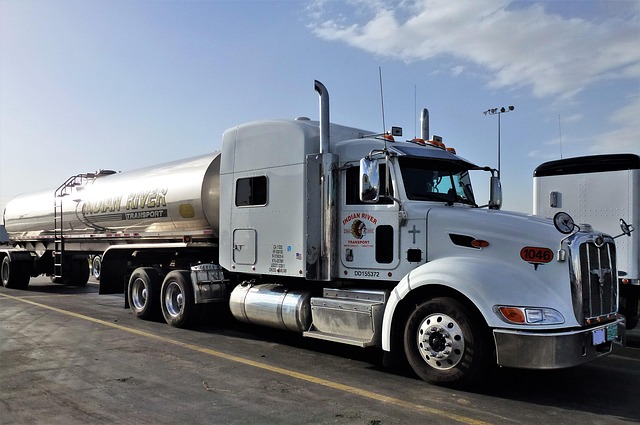Looking to register your car in California? This comprehensive guide walks you through every step, from understanding eligibility requirements to securing your license plate. We cover crucial aspects like gathering essential documents, undergoing a vehicle inspection and DVLA (DMV) VIN verification, completing application forms accurately, and paying registration fees. By following these steps, you’ll navigate the process smoothly and legally in the Golden State.
- Understand Eligibility Requirements for Car Registration
- Gather Necessary Documents for DMV Visit
- Perform Vehicle Inspection and Vin Verification
- Complete Application Forms Accurately
- Pay Registration Fees and Obtain License Plate
Understand Eligibility Requirements for Car Registration

Before registering your car in California, it’s crucial to understand eligibility requirements set by the Department of Motor Vehicles (DMV). One key step is ensuring your vehicle meets safety and emissions standards. The DMV conducts a thorough process called VIN verification, which involves checking the Vehicle Identification Number (VIN) against state records to ensure the car’s legitimacy and history. This process also helps in combating theft and ensuring only legal vehicles are on the road.
For convenience, many California residents opt for mobile VIN inspection or verification services that come to them. These services simplify the process by providing on-site vehicle assessments, potentially saving time and effort compared to visiting a DMV office. By understanding these requirements and taking advantage of available resources like mobile VIN inspections, you can smoothly navigate the car registration process in California.
Gather Necessary Documents for DMV Visit

Before heading to the California Department of Motor Vehicles (DMV), ensure you have all the essential documents in order for a smooth registration process. The first step is to obtain and complete Form DV140, which can be found on the DMV website. This form requires basic information about your vehicle, including its make, model, year, and VIN (Vehicle Identification Number). Accurate VIN entry is crucial as it facilitates a dmv vin verification, a mandatory part of the registration process in California.
Additionally, gather other important documents such as proof of insurance, a valid driver’s license or state ID card, and any prior vehicle registration records if applicable. If you’re opting for a mobile vin inspection or using a mobile vin verifier to streamline the process, make sure these services are pre-arranged and that you have all necessary authorizations in place. This advanced preparation will help you navigate the DMV visit efficiently.
Perform Vehicle Inspection and Vin Verification

Before registering your car in California, it’s crucial to ensure that your vehicle meets all safety and emission standards. One critical step is to undergo a comprehensive DMV vin verification process. This involves both a vehicle inspection and checking the Vehicle Identification Number (VIN) to confirm its authenticity and history. Many residents opt for convenient mobile vin inspection services, allowing them to complete these steps without visiting a DMV office.
During this process, a qualified inspector will examine essential components of your car, including brakes, lights, tires, and emissions systems. Simultaneously, the VIN is cross-referenced with national databases to uncover any previous accidents, outstanding loans, or potential theft issues. Ensuring your vehicle passes these checks is an integral part of the registration process in California.
Complete Application Forms Accurately

To ensure a smooth car registration process in California, it’s crucial to complete all application forms accurately and thoroughly. This includes providing precise information about your vehicle, such as its make, model, year, and unique Vehicle Identification Number (VIN). Accurate VIN verification is a critical step facilitated by services like mobile VIN inspection or a mobile VIN verifier, ensuring that the details match those on record with the Department of Motor Vehicles (DMV).
Carefully fill out forms, double-checking your answers to avoid errors. Inaccurate or incomplete information can lead to delays or even rejection of your registration application. Remember, the DMV relies on the accuracy of your submitted data for proper vehicle documentation and safety regulations, so taking the time to complete forms meticulously is essential.
Pay Registration Fees and Obtain License Plate

After completing your vehicle’s registration application at the California DMV, it’s time to pay the required fees. These fees vary based on the type and age of your vehicle. Once your payment is processed, you’ll receive a Registration Certificate. This document confirms your vehicle’s legal status in California. Before you can drive your car off the lot, you need to obtain license plates. The DMV will issue these upon receipt of your completed application and registration fee payment.
For added convenience, consider using a mobile vin verification service for your vehicle inspection. This allows you to conduct the necessary checks remotely, streamlining the process. A mobile vin verifier can cross-reference your car’s unique vehicle identification number (VIN) against state records, ensuring that your vehicle meets all legal standards before final registration.
Registering a car in California involves understanding eligibility requirements, gathering essential documents, undergoing vehicle inspections and VIN verification through the DMV, accurately completing application forms, and paying registration fees. By adhering to these steps and ensuring all necessary information is accurate, you’ll be on your way to legally registering your vehicle in the Golden State. Don’t forget to conduct a thorough VIN verification to ensure the vehicle’s history aligns with its claims.
